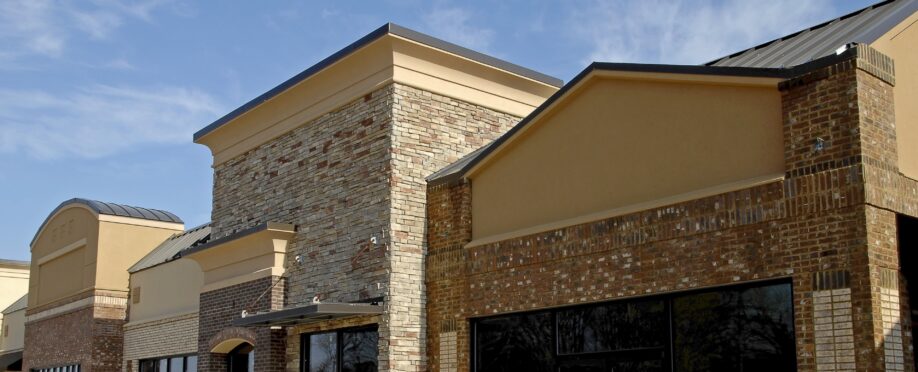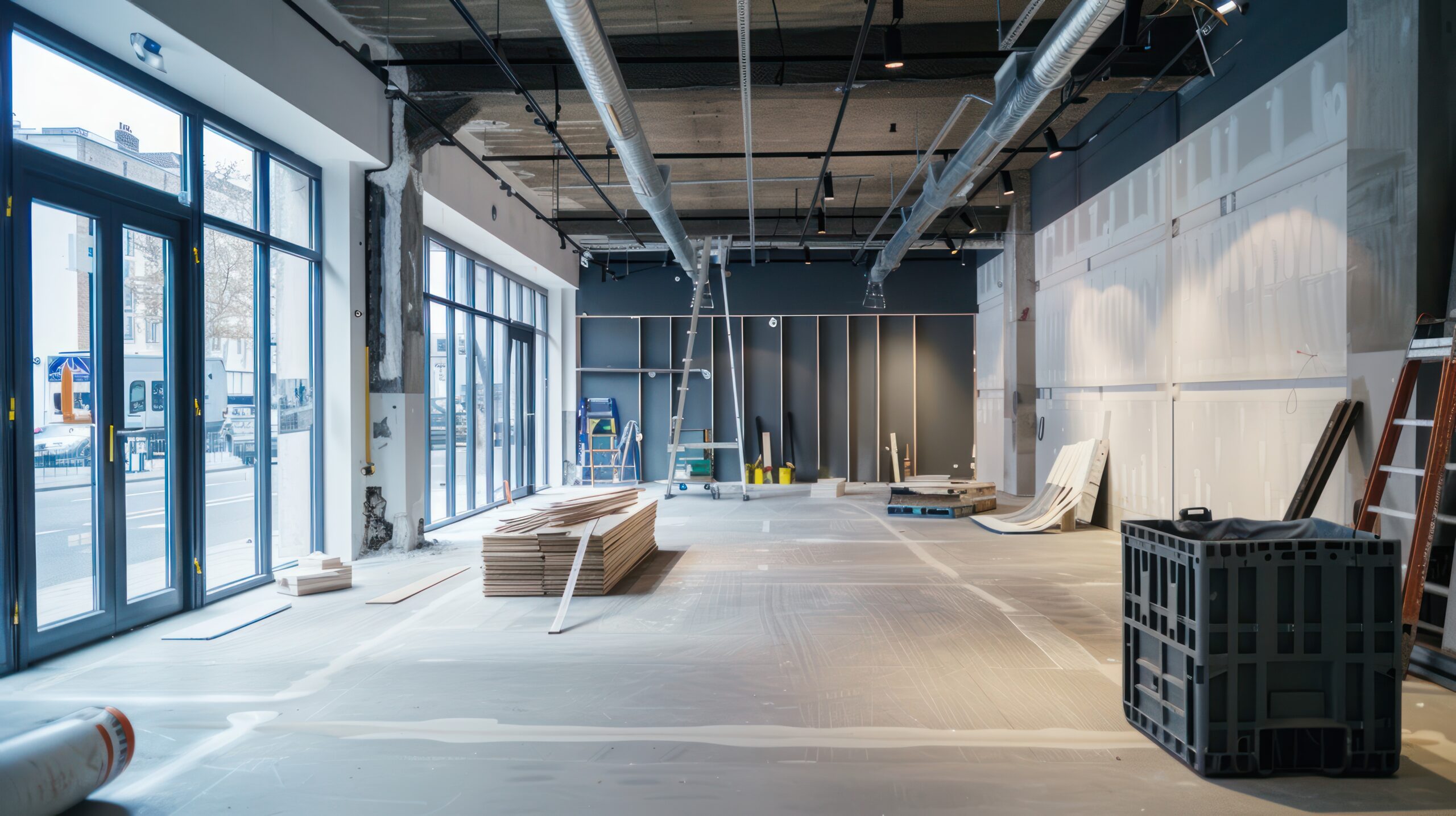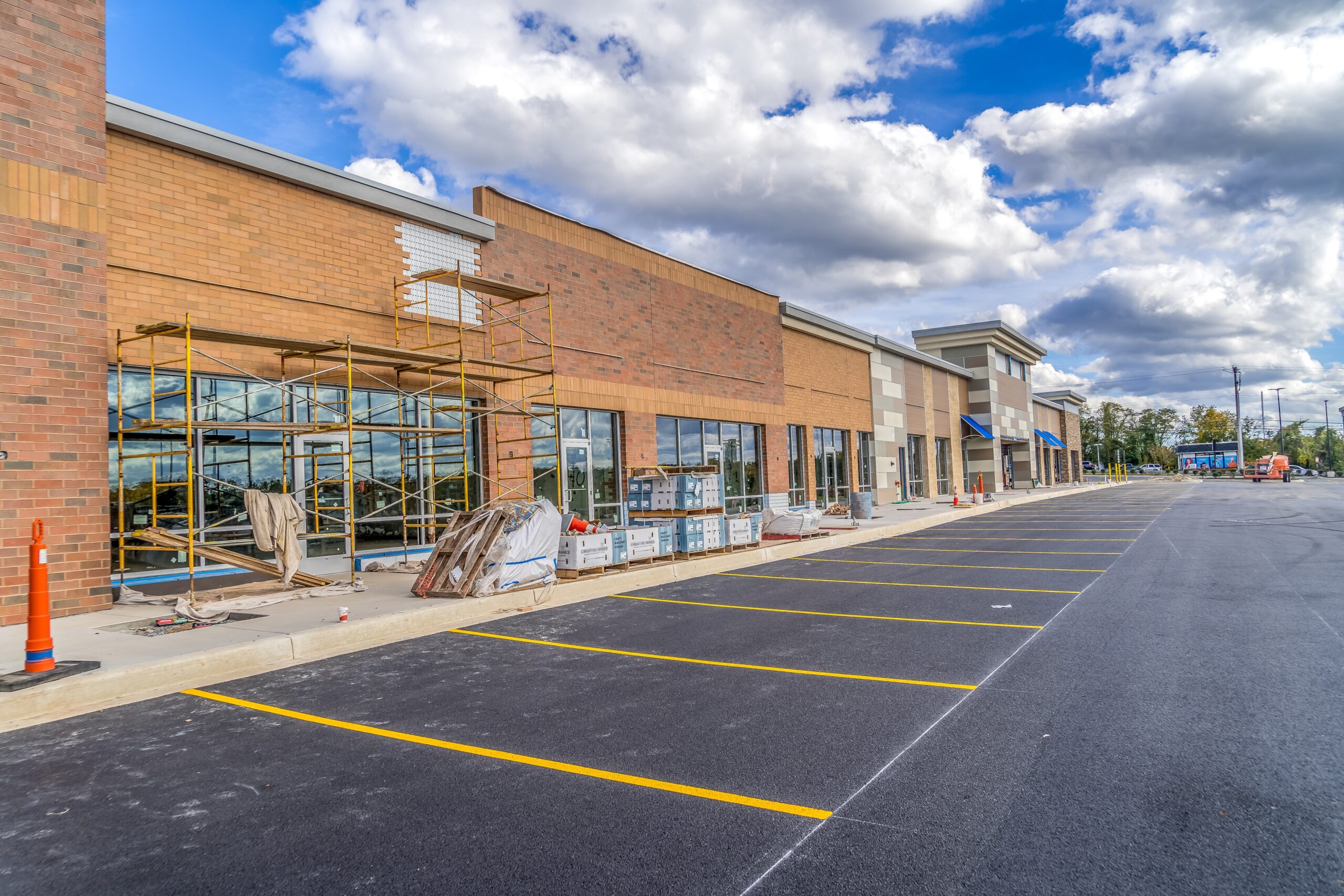
One of the most effective ways for modern retailers to stay modern is with regular, planned remodeling and renovation projects. Well-executed retail remodeling can completely reinvent your customers’ experience, making your supermarket or retail location a sought-after shopping destination.
Retail remodeling projects involve numerous stakeholders and collaborators, from store operations and management teams to mechanical, electrical, and plumbing contractors. The store development team plays a significant role in launching these projects, ensuring they go safely, smoothly, and according to plan.
We spoke to Bill Lawrence, Senior Vice President of Construction and Program Management with City Building Engineering Services (CBES), who offered some best practices for development teams, drawn from his decades of experience in the industry.
What Is Retail Renovation?
Retail renovation involves updating a store location to better meet the needs of customers and business operations. Renovation projects can range from branding and aesthetics updates, to more functional alterations to store layout and fixtures, to store expansions.
Some of the more common retail renovation projects include:
- Store layout redesign: Structural redesigns can include massive overhauls, including knocking out walls, ceilings, and even flooring to support new layouts and expansions to existing spaces.
- Updating displays and fixtures: New shelving and product installations can change a dreary grocer or food mart into something clean, modern, and attractive to customers.
- Rebranding: Updating signage and decor is a necessary step when undergoing a rebrand, ensuring your new identity is fully reflected in your physical locations. Not only can this freshen up a store, but it can also completely change how customers see your brand.
- Adding new technology: Many modern retailers are moving toward digital technology, such as digital signs, self-checkouts, smart building systems, and technologies that can help with energy efficiency or reducing stores’ carbon footprint.
7 Retail Remodeling Best Practices
According to a report from Oracle, which surveyed grocery store customers, 40 percent of respondents stated they would shop at a different store if they had a negative customer experience.
This underscores the importance of a successful renovation — it can transform your retail space and enhance the shopping experience. However, if you don’t follow key best practices during the remodel, you run the risk of driving customers away due to disruption.
1. Prioritize communication and collaboration
“The success of any good project starts with good communication and excellent planning,” Bill emphasizes.
The success of any good project starts with good communication and excellent planning, Bill emphasizes.Bill Lawrence, SVP of Construction and Program Management with CBES
The store development team must work closely with the contractors and builders involved in the remodeling and with the operations team at the location.
“Store operations are a critical partner for remodeling,” Bill says. “Without their avid involvement, the project is likely to fail.”
Ensure that key stakeholders, including store development team members, store managers, operations staff, general contractors, and individual contractors, participate in daily progress meetings. Such meetings are typically held first thing in the morning after the nighttime construction shift ends and should facilitate clear information sharing among all relevant parties.
2. Master the art of strategic planning
Remodeling projects are inherently complex, involving numerous moving parts and stakeholders, each playing a critical role in determining the project’s success or failure. As such, when projects start to falter, they often do so across multiple points, making careful and thorough planning essential.
A well-thought-out plan addresses the following factors:
- Clear and detailed project scope and budgeting
- Safety protocols and guidelines for contractors and operations
- Optimal scheduling — either nighttime or daytime hours, depending on what’s best for the project based on budget, timeline, and potential disruption to customers
- A strategic timeline that takes into account holidays and busy seasons
- Standards for quality control to ensure work meets expectations without the need for costly corrections
- Collaboration practices for ensuring effective communication among all stakeholders, including store development and operations teams, contractors, and store associates
3. Always put safety first
Safety is the most important priority of any project. Hazards like exposed metal, open wires, or loose tiles can endanger both employees and shoppers. It’s up to store operations and management, not just the general contractor, to ensure that cleaning and safety measures are in place.
“If your remodel involves cutting into floors for plumbing or refrigeration, the work must be properly executed, inspected, and covered — all of which can take days or weeks,” Bill notes. “Make sure to cover these areas with metal plates and carpets to prevent accidents and remind customers to watch out for them.”
Store development and operations should conduct daily safety walks throughout the store. Use cones and clear signage to alert customers to hazardous areas, and ensure that construction zones are blocked off with plastic barriers to contain debris.
4. Tap into retail expertise
Choosing experienced contractors goes without saying — but selecting those with a proven background in the retail space is equally important. By understanding the unique needs of remodeling a supermarket, grocery store, or other retail store, experienced retail contractors are well prepared for challenges such as avoiding customer disruption and ensuring minimal interference with store operations, all while maintaining a safe and clean environment.
Here are some key qualifications to look for:
- Retail experience: A solid contractor will have demonstrable experience in grocery store renovation and familiarity with industry-specific requirements that streamline the process.
- Sustainability and efficiency: Look for contractors that provide energy-efficient technologies. They should be able to help assess new technologies and select optimal equipment, energy management systems, and other sustainable building solutions.
- Familiarity with multi-site and capital projects: Your contractor should have experience working in large-scale capital projects and multi-site rollouts while effectively managing both schedule and budget.
5. Weigh day vs. nighttime remodeling options
According to Bill, most grocery store remodeling happens at night to avoid disrupting customers or employees. However, there are advantages to conducting renovations during the day.
Day labor is generally less costly than night labor, and it’s more readily available due to more convenient “straight” hours. You can also avoid other associated costs, such as nighttime security personnel.
That being said, daytime renovations can be highly disruptive to both customers and employees. Additionally, they can lead to unclean and unsafe conditions within the store unless carefully managed and monitored, creating more strain on staff and operations teams.
“For most grocers and retailers, customer experience isn’t worth sacrificing for limited expediency,” Bill says. “If cost is a critical factor and longer duration is acceptable, renovating during daytime hours is likely the better choice.”
5. Get the timing right
How long does it take to remodel a store? Depending on the scope of work, executing an end-to-end remodel of a 50,000-square-foot food supermarket can take around 7 months on average, Bill says.
That’s a significant disruption for employees and customers. Because of these long timeframes, it’s essential to consider how the schedule might overlap with important business seasons.
Avoid construction work during the holidays and heavier shopping seasons. For example, coastal supermarkets should avoid launching a significant renovation during the busy summertime. Similarly, avoid renovating departments during high-traffic events — for example, wait until after Valentine’s Day to update the florist department.
The month between Thanksgiving and Christmas is generally considered off-limits for any construction work, so plan to pause on longer projects around this time.
6. Keep customers informed
Don’t keep your customers in the dark about why you’re remodeling. Let them know exactly what’s happening and why, and how long they can expect the project to take. Assign dedicated concierge staff to interface with customers, set up placards indicating the movement of products, and ensure safety measures stay in place.
7. Practice patience
Ensure that everyone, from the operations team to store associates, understands that the remodeling project means exciting changes for your store, such as new branding, more space, and a wider selection of products and services. Reassure them that sales lost during a renovation will come back.
Another important thing to note: “Challenges and unexpected changes are an inevitable part of the process,” Bill says. “ When issues do arise, swift response and clear communication ensure that everyone is informed about any adjustments to the timeline.”
When issues do arise, swift response and clear communication ensure that everyone is informed about any adjustments to the timeline.Bill Lawrence, SVP of Construction and Program Management with CBES
Best Practices for Store Rollouts
A store rollout is the systematic launch of a new service or concept across multiple store locations. As such, they’re similar to single-site renovations, but they involve coordinating the same updates across multiple locations.
Rollouts are a strategic alternative to large-scale renovations, allowing retailers to execute high-impact changes while minimizing disruptions. Deloitte suggests this agile approach boosts sales by 10 to 15 percent and customer satisfaction by 20 percent.
“Store rollouts still follow the same guidelines as standard retail renovations,” says Bill. “But because they’re smaller-scale in nature, using daytime labor is much more feasible, with proper planning in place.”
The Leading Experts in Retail Building and Engineering
Renovating your store is an investment in your customers’ experience and your brand’s future. While retail renovation is a considerable undertaking, the right best practices and working with the right partners can make a world of difference, minimizing the impact on your day-to-day operations.
CBES brings industry-leading retail building and engineering expertise to help you complete your projects from start to finish. Whether it’s new store development, remodeling, or capital projects, our comprehensive solutions ensure your stores operate efficiently, enhance the customer experience, and meet sustainability goals. Reach out to our team to learn more about our end-to-end engineering, programming, and sustainability solutions.



 2016: City US is established in North America, in partnership with Southeastern Grocers (SEG), servicing over 750 supermarkets across 7 southern states.
2016: City US is established in North America, in partnership with Southeastern Grocers (SEG), servicing over 750 supermarkets across 7 southern states. 1985: Willie and Susan Haughey establish City Refrigeration Holdings (UK) Ltd in Glasgow, UK.
1985: Willie and Susan Haughey establish City Refrigeration Holdings (UK) Ltd in Glasgow, UK. 2009: City Australia launches in Melbourne, in partnership with Coles, servicing over 700 supermarkets across the country.
2009: City Australia launches in Melbourne, in partnership with Coles, servicing over 700 supermarkets across the country. 2015: City Asia launches in Kuala Lumpur, Malaysia, in partnership with Dairy Farm, servicing over 205 supermarkets across the region.
2015: City Asia launches in Kuala Lumpur, Malaysia, in partnership with Dairy Farm, servicing over 205 supermarkets across the region.